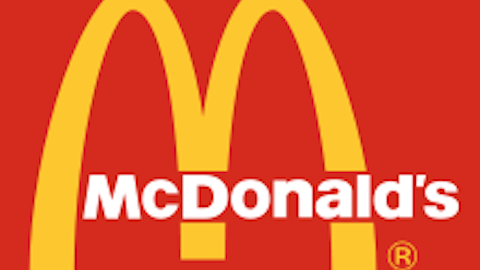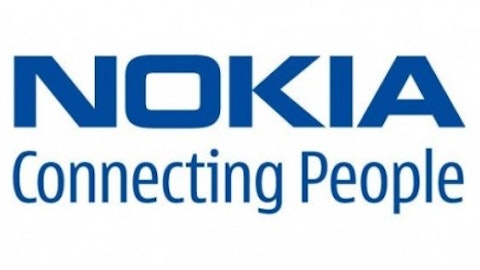Raymond James analyst Tavis McCourt seemed slightly fed up. Sentiment for Apple Inc. (NASDAQ:AAPL) stock is “horrible, in the institutional investor community, and ultimately we view this as feedstock for outperformance,” he said. Upgrading his rating from outperform to strong buy, McCourt reiterated his $600 price target for the stock on Monday. Could McCourt be right? After all, $600 is a pretty hefty premium to today’s prices.
What’s next in mobile computing?
McCourt calls it phase two: When the growth of smartphone and tablet markets begins to subside, and smartphone chipsets and ecosystems start invading televisions and automobiles, and gaining “uses not currently thought of for computing devices.” With the help of its vertical integration, McCourt believes that the Cupertino-based tech giant is positioned to take a large share of industry profits as it enters the second phase of the “mobile computing revolution.”
Valuation matters
All of this sounds great, but aren’t there plenty of other companies positioned to benefit from this second phase, too? Vertically integrated or not, $600 is a lofty target.
McCourt’s $600 price target isn’t a random bullish target. In fact, it’s not too far from the average analyst target of about $539. McCourt is simply being objective. The stock is cheap, he argues. He sees the Street’s negative sentiment toward Apple Inc. (NASDAQ:AAPL) as a good thing — poor expectations are mostly already priced into the stock. In order for the stock to take a major hit, he explains, “trends at Apple Inc. (NASDAQ:AAPL) would have to erode meaningfully.”
Just how cheap is Apple?
Using a reverse discounted cash flow valuation, and a 10% discount rate, the growth rate assumed by the market for Apple’s free cash flow going forward is just 1.4%. In other words, at today’s price for Apple Inc. (NASDAQ:AAPL)’s shares, the market expects competition and eroding margins to prevent the business from growing even at the historical rate of inflation.
To add some context, it’s useful to compare Apple Inc. (NASDAQ:AAPL) with another megacap cash cow: McDonald’s Corporation (NYSE:MCD). Ironically, Apple and McDonalds share some common characteristics as stocks. Like Apple, McDonald’s Corporation (NYSE:MCD) growth seems to be slowing. In the company’s first quarter, global comparable sales decreased 1% from the year-ago quarter. Revenue increased just 1%. Furthermore, the stock’s dividend yield just barely tops Apple’s; both are close to 3%.
As far as valuation goes, however, Apple Inc. (NASDAQ:AAPL) and McDonald’s Corporation (NYSE:MCD) are as different as night and day.
| Valuation Metric | Apple | McDonald’s |
|---|---|---|
| Free cash flow growth rate assumed by the market | 1.4% | 17.4% |
| Price/free cash flow | 8.9 | 25.5 |
| Price/forward earnings | 9 | 15.6 |
Why is McDonald’s stock so much more expensive than Apple’s? Chances are it’s because the market is confident in McDonald’s cash flow going forward. Apple, on the other hand, may leave investors nervous. Investors are asking tough questions: Can the company sustain its meteoric levels of free cash flow? How much further will the company’s margins continue to fall?
But is Apple truly deserving of a valuation so inferior to McDonald’s? The company’s conservative valuation levels the playing field, making the stock’s risk/reward profile a convincing value proposition. The market’s serious concerns are arguably already priced into the stock.
The price for Apple Inc. (NASDAQ:AAPL) stock is awfully cheap. Does this mean the stock is going to immediately appreciate? No. But if there is an undervalued company in the S&P 500 that looks likely to earn investors solid returns over the long haul, Apple definitely fits the bill.
The article 1 Analyst Gets Bullish on Apple originally appeared on Fool.com and is written by Daniel Sparks.
Fool contributor Daniel Sparks has no position in any stocks mentioned. The Motley Fool recommends Apple and McDonald’s. The Motley Fool owns shares of Apple and McDonald’s.
Copyright © 1995 – 2013 The Motley Fool, LLC. All rights reserved. The Motley Fool has a disclosure policy.






